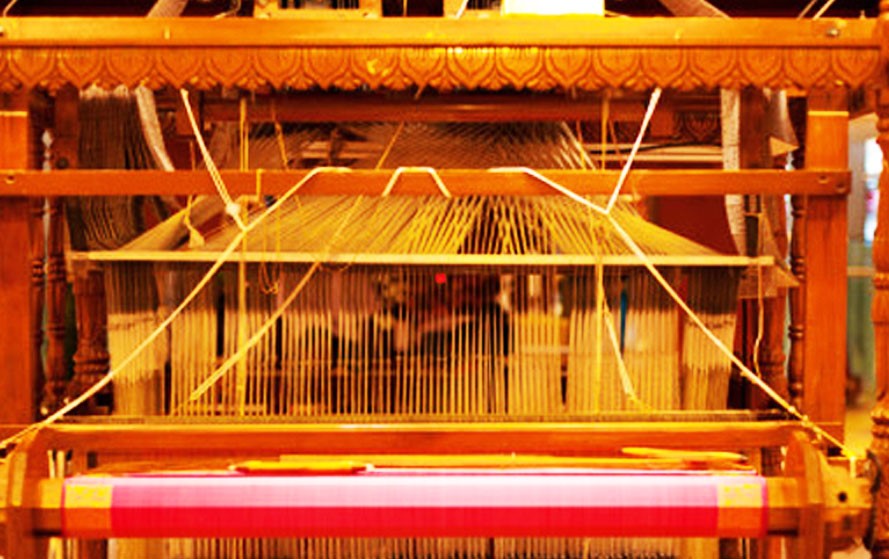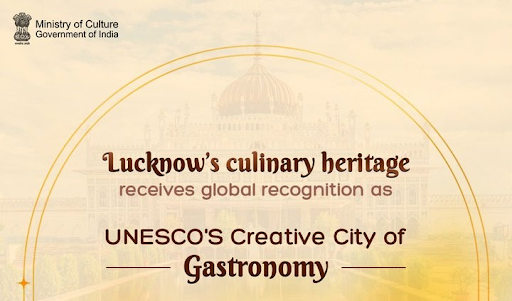Description

Disclaimer: Copyright infringement not intended.
Context
- Prime Minister Shri Narendra Modi is set to participate in the National Handloom Day celebration on 7th August.
- The National Handloom Day, first celebrated in 2015, was initiated to honor the Swadeshi Movement launched on 7th August, 1905, which promoted indigenous industries and handloom weavers.
Details
Launch of "भारतीय वस्त्र एवं शिल्प कोष" e-Portal
- During the National Handloom Day celebration, Prime Minister Narendra Modi will inaugurate the e-portal of "भारतीय वस्त्र एवं शिल्प कोष" (Repository of Textiles & Crafts).
- Developed by the National Institute of Fashion Technology (NIFT), this portal serves as a repository of information about textiles and crafts.
- It is designed to preserve and showcase the rich heritage of Indian textiles and handicrafts, providing a platform to promote and support artisans and craftsmen across the country.
Government Interventions to Support Handloom Weavers
The Government of India has undertaken various initiatives to uplift the handloom sector and provide support to weavers and allied workers.
- Block Level Clusters: The block level cluster scheme focuses on the integrated development of handloom pockets through interventions like skill up-gradation, construction of individual work sheds, design and product development, and Common Facility Centers.
- Skill Up-Gradation: Weavers and allied workers receive training and exposure to learn new techniques, adapt to new technology, and develop innovative designs and colors. This enables them to keep pace with changing market trends.
- Hatkharga Samvardhan Sahayata (HSS): HSS aims to improve fabric quality and productivity by providing upgraded looms and accessories. The scheme involves both the Government of India and respective State Governments.
- Work Shed Construction: Individual work sheds are constructed close to weavers' homes, providing a dedicated working space for entire weaver families. Marginalized households and female weavers receive 100% financial assistance for these sheds.
- Engagement of Designers: Professional designers are engaged to create new designs and products, with provisions for paying their fees and establishing marketing linkages.
- Yarn Subsidy: The scheme provides freight charge reimbursement and a component of 15% yarn subsidy for cotton hank yarn, domestic silk, wool, and blended yarn. This helps handloom weavers compete with power-looms in pricing.
- MUDRA Loan: Weavers can access subsidized loans at a concessional interest rate of 6% through banks, and the Ministry bears the credit guarantee fee to encourage lending.
- Learning Opportunities: MoUs have been signed between the Ministry of Textiles and National Institute of Open Schooling (NIOS) and Indira Gandhi National Open University (IGNOU) to empower weavers and the youth from weaver families through education.
- Bunkar Mitra Helpline: A toll-free helpline has been set up to provide a single point of contact for addressing professional queries of handloom weavers.
- Welfare Measures: Handloom weavers are covered under various welfare schemes, including Pradhan Mantri Jeevan Jyoti Bima Yojana (PMJJBY) and Pradhan Mantri Suraksha Bima Yojana (PMSBY).

Handloom Sector in India
Contribution of Handlooms
- The handloom industry plays a crucial role in India's economy and society.
- According to the Handloom Census 2019-20, there were around 35,22,512 handloom workers across the country, with an impressive 72.29% of them being women.
- The sector is one of the largest unorganized economic activities, providing employment to over 43.31 lakh weavers from rural and semi-urban areas, most of whom are women and come from economically disadvantaged backgrounds.
Strengths of the Handloom Sector
The handloom sector boasts various strengths that give it a comparative advantage over other sectors:
- Minimal Use of Capital and Power: The handloom industry is eco-friendly and sustainable as it requires minimal capital and power for production.
- Diverse Premium Design Choices: The sector enables the production of unique and customized designs, offering consumers a wide variety of premium choices.
- High Return on Investment (ROI): Finished handloom products command higher prices, resulting in a higher return on investment for weavers.
- Geographical Diversity: Handlooms are spread across India, with a significant concentration in the North East region, accounting for 65.2% of total operational handlooms.
Women Empowerment and Workforce
- Women's empowerment is at the core of the handloom industry, with over 77% of the adult weavers and allied workers being women.
- In the North East region, women dominate the workforce with a staggering 48.98% representation.
- However, despite their significant contribution, women weavers often face challenges related to their recognition, social status, and access to credit and resources.
Challenges Faced
The handloom sector faces various challenges that hinder its growth and sustainability. These challenges include:
- Shortage of Inputs and Working Capital: Weavers face difficulties in accessing raw materials and adequate working capital.
- Inadequate Credit Availability: Limited availability of credit for investment in the handloom business.
- Marketing Issues: Lack of awareness about customer preferences, inability to distinguish handloom from power loom products, and limited promotional campaigns.
- Quality Inconsistencies and Supply Chain Inefficiencies: Ensuring consistent product quality and efficient supply chain management.
- Competition from Power Looms and Mills: The handloom industry faces tough competition from power looms and mills.
- Technological Backwardness: The sector needs to adopt modern technologies for better efficiency.
- Paucity in New Designs and Reduction in Number of Weavers: Innovating and retaining skilled weavers is crucial for the industry's growth.
Potential for Exports
- The Indian handloom products hold immense potential in the global market.
- India stands as the second-largest exporter of handloom products, with exports valued at US$ 353.9 million in 2017-18.
- The industry caters to over 125 countries worldwide, showcasing its appeal and demand internationally.
Way Forward for the Handloom Sector
- Recognition and Inclusion: Recognize the significant contribution of women weavers and workers in official statistics. Include women as primary workers in census and enumerations to improve their access to credit and government schemes.
- Financial Inclusion: Facilitate better access to credit and working capital for weavers through cooperative societies and self-help groups. Create specialized development programs and budgetary allocations for women weavers.
- Skill Development and Literacy: Conduct skill development programs and literacy initiatives to enhance the standard of living for women weavers. Empower them with knowledge and skills to improve their productivity and socio-economic status.
- Market Intelligence and Promotion: Provide market intelligence to weavers to understand customer preferences and trends. Promote handloom products through campaigns, exhibitions, and e-commerce platforms to reach wider audiences.
- Quality Assurance and Supply Chain Management: Focus on maintaining consistent product quality and streamlining supply chain processes. Invest in technology and modern practices to improve efficiency and competitiveness.
- Innovation and New Designs: Encourage innovation and creativity in design development to keep the handloom industry attractive and relevant to changing market demands.
- Support from Government Schemes: Ensure effective implementation and dissemination of various government schemes for the handloom sector. Develop a comprehensive database to track progress and measure the impact of these initiatives.
- Regional Focus and Cluster Development: Concentrate on region-specific development initiatives, especially in the North East, which has a significant concentration of handlooms. Implement cluster development schemes for holistic growth.
- Women's Welfare Programs: Implement welfare schemes related to healthcare, insurance, and social security with a specific focus on women weavers.
- Industry and Stakeholder Collaboration: Foster collaboration between government agencies, industry associations, chambers of commerce, producers, and consumers to address challenges and promote sustainable growth in the handloom sector.
- Export Promotion: Continue to leverage the export potential of Indian handloom products and explore new markets globally to enhance foreign exchange earnings.
- Digital Transformation: Embrace digital technology to facilitate online marketing and e-commerce for handloom products. Develop a cab aggregator-like platform to match demand and supply in the industry.

Conclusion
- National Handloom Day serves as a reminder of the invaluable contribution of the handloom sector to India's cultural heritage and rural livelihoods. The Government of India's interventions play a crucial role in supporting and empowering handloom weavers and allied workers. By continuing to invest in skill development, infrastructure, and marketing opportunities, India can preserve its handloom heritage while ensuring a sustainable and prosperous future for the weaver community. As responsible citizens, we can contribute by using and promoting Indian handloom products, supporting the livelihoods of these artisans, and keeping their exquisite craftsmanship alive for generations to come.
|
PRACTICE QUESTION
Q. Discuss the significance of the handloom industry in India and the challenges it faces. How can the government promote and revitalize this traditional sector to preserve India's cultural heritage and promote sustainable development? (150 Words)
|
https://pib.gov.in/PressReleasePage.aspx?PRID=1946100















